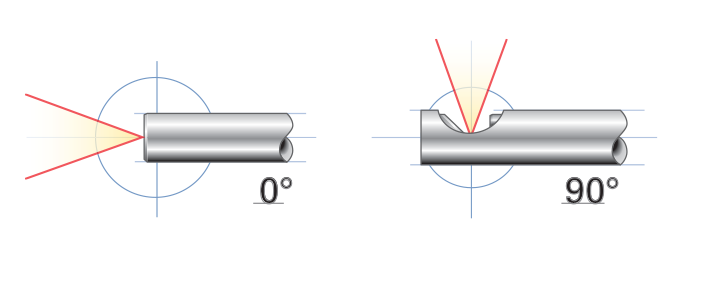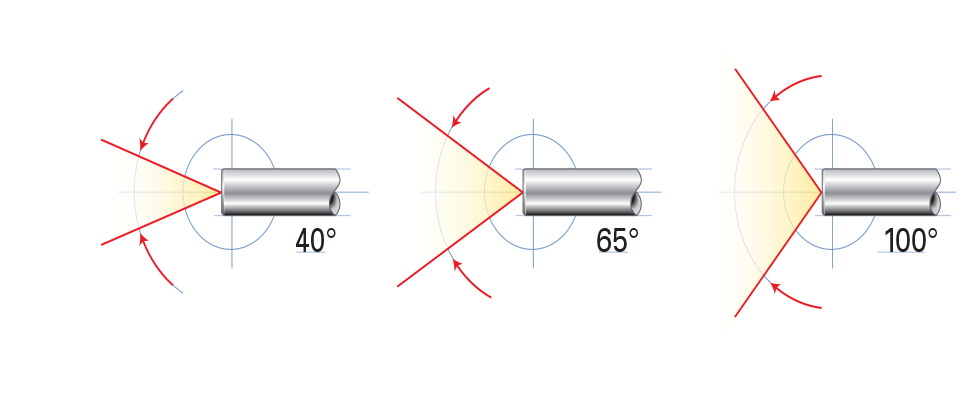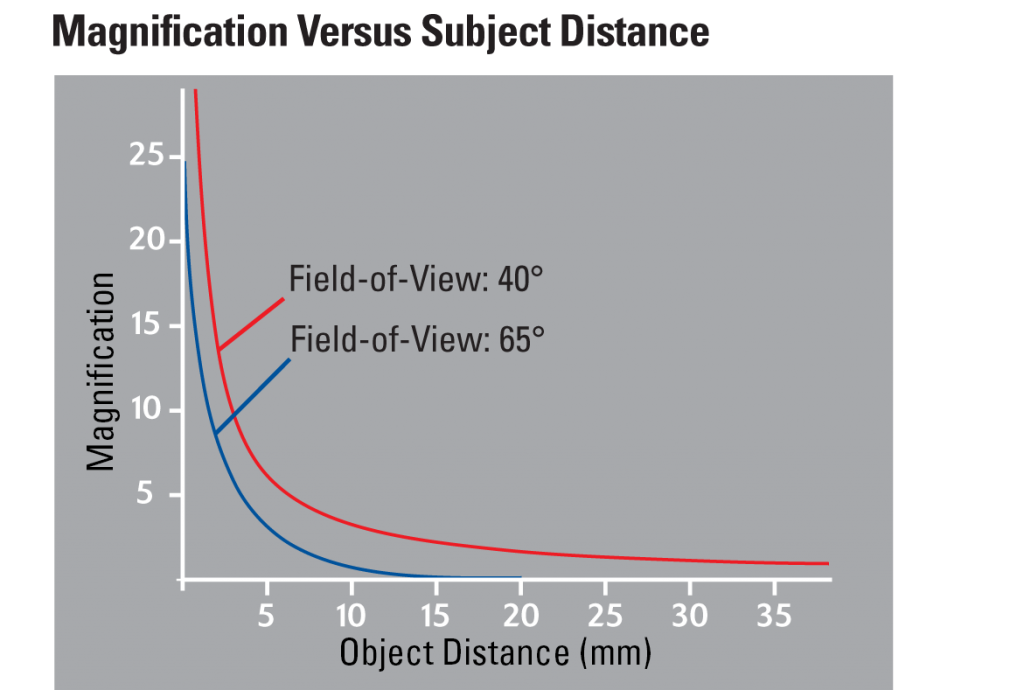Borescope Technology
Rigid Borescopes
The heart of a rigid borescope design is the relay lens system. Gradient Lens Corporation’s patented endoGRINs® design makes lens manufacturing and assembly easier and less costly, without sacrificing image quality.

Our patented endoGRINs® gradient index lenses are the core technology of Hawkeye® Pro and Classic Rigid Borescopes. The elegant simplicity of the endoGRINs design gives excellent optical quality at a much lower cost than traditional alternatives, like the Hopkins design, which uses many expensive micro-lenses and optical glass rods.
As described above, rigid borescopes use traditional, glass optics to relay the image. If your entry path is straight, a rigid borescope delivers excellent image quality and can be more cost-efficient than either fiberoptic or video borescopes.
Fiberoptic Borescopes
Fiberoptic borescopes use optical glass fibers to relay the image. Resolution depends on the number of fibers and their diameter. Each fiber forms a pixel in the final image. If your entry path is not straight, fiberoptic borescopes have the advantages of flexibility and articulation.

Video Borescopes
When compared with any other type of borescope, video borescopes deliver the best combination of image quality and convenience.
Videoscopes transmit light through the objective lens to miniature video cameras, which then convey the image to a portable handheld monitor, or, laptop and desktop computers. When portability, still and video image capture, and image storage and documentation are key factors, a videoscope is the right choice.

Direction-of-View (DOV)
Hawkeye Pro Borescopes see straight-ahead (0°) and sideways (90°) with a mirror tube that slides over the borescope tube, making them two borescopes in one. The mirror tube rotates the view over a full 360°, using the knurled knob.

Hawkeye Pro Prism Borescopes are available in four, dedicated DOV’s, 0º, 30º, 70º, and 90º.

Field-of-View (FOV)

Most inspection situations need a “normal” objective lens (like a typical camera) with an angle of about 40°.
Wider lenses see more, but at a lower magnification, giving less detail. Magnification increases as the borescope approaches the subject, unlike a microscope objective, which gives a fixed magnification at one object distance.
